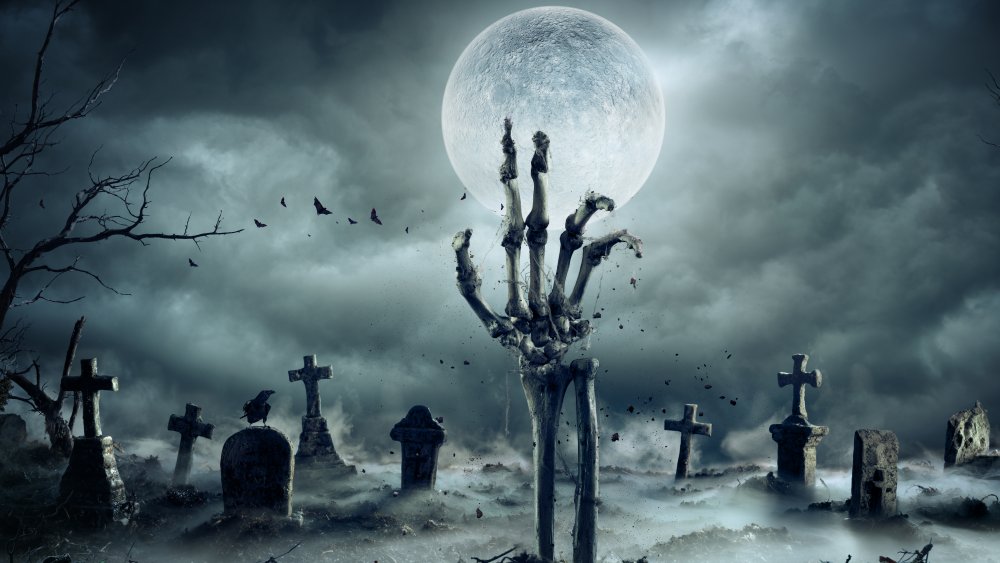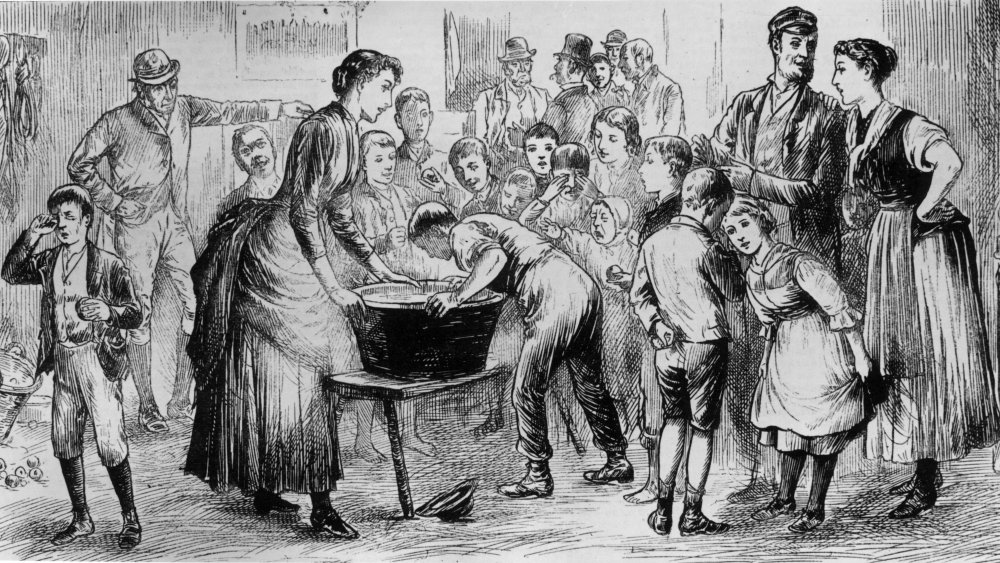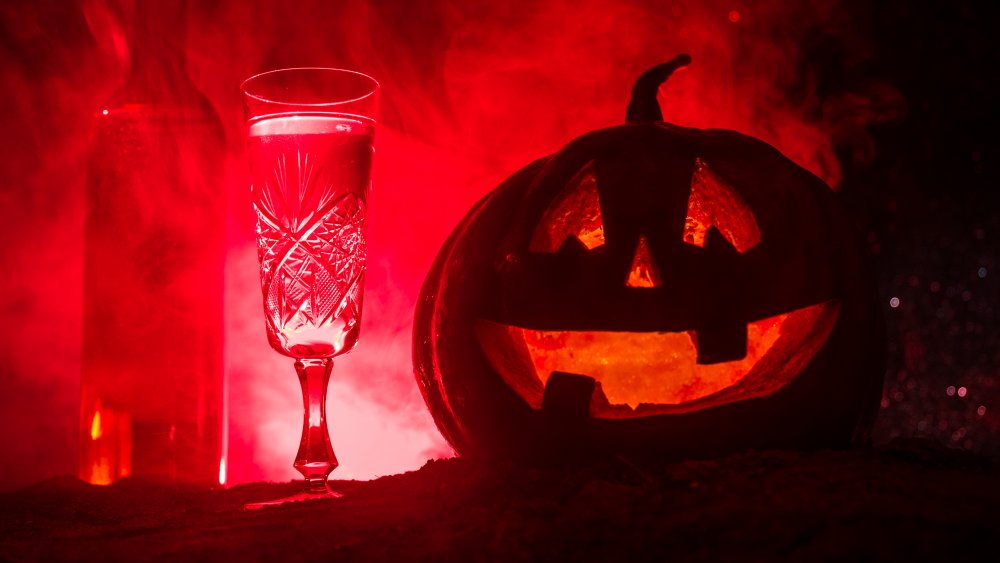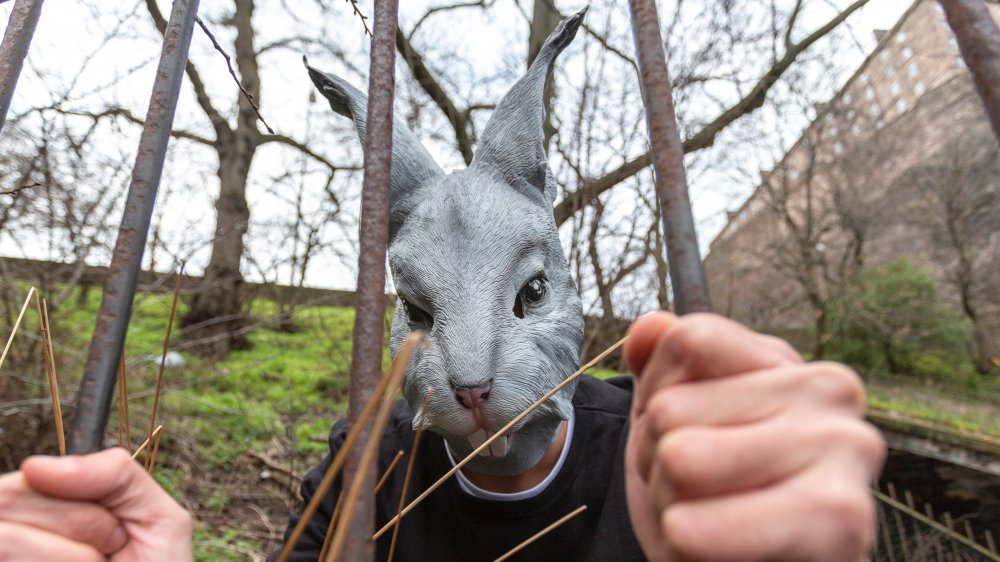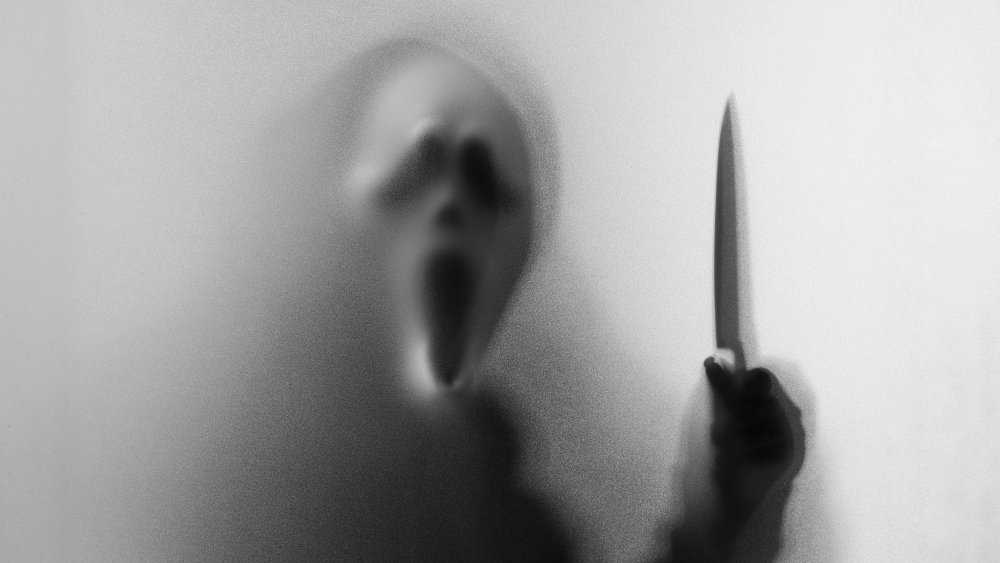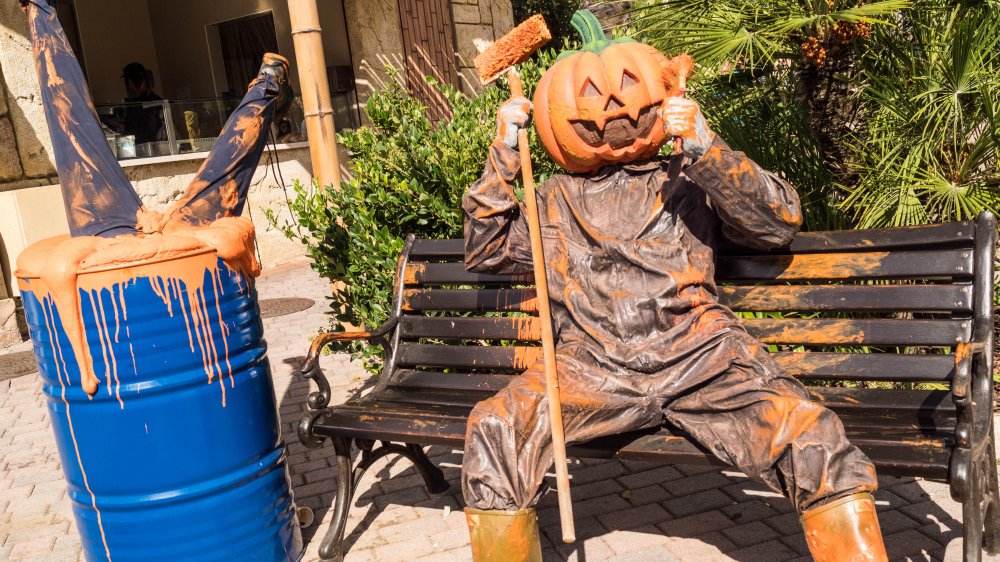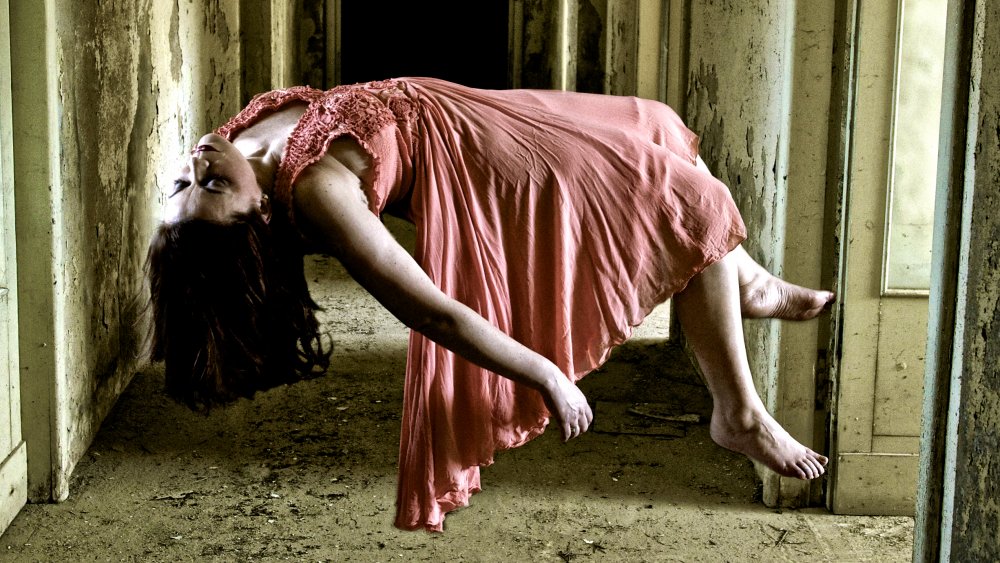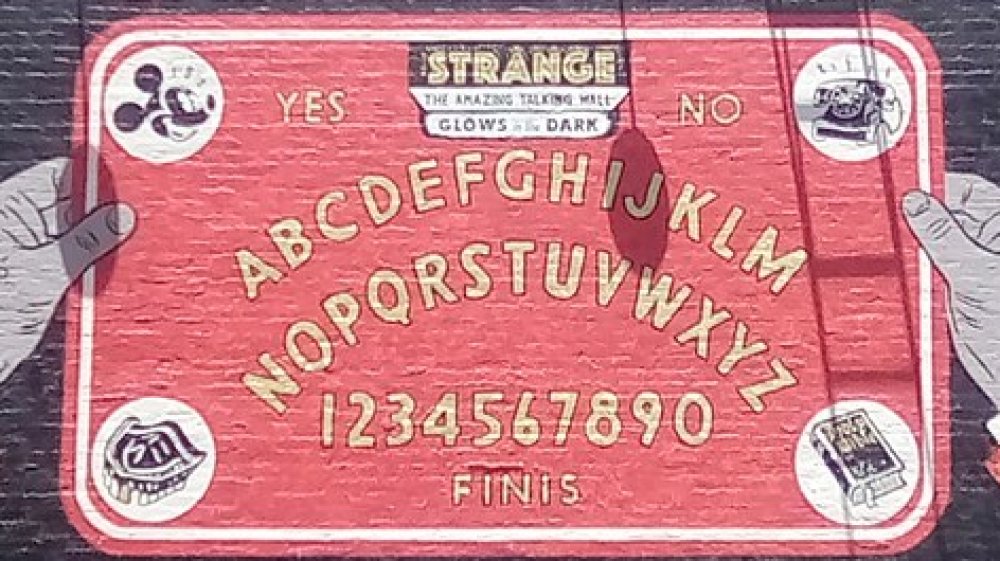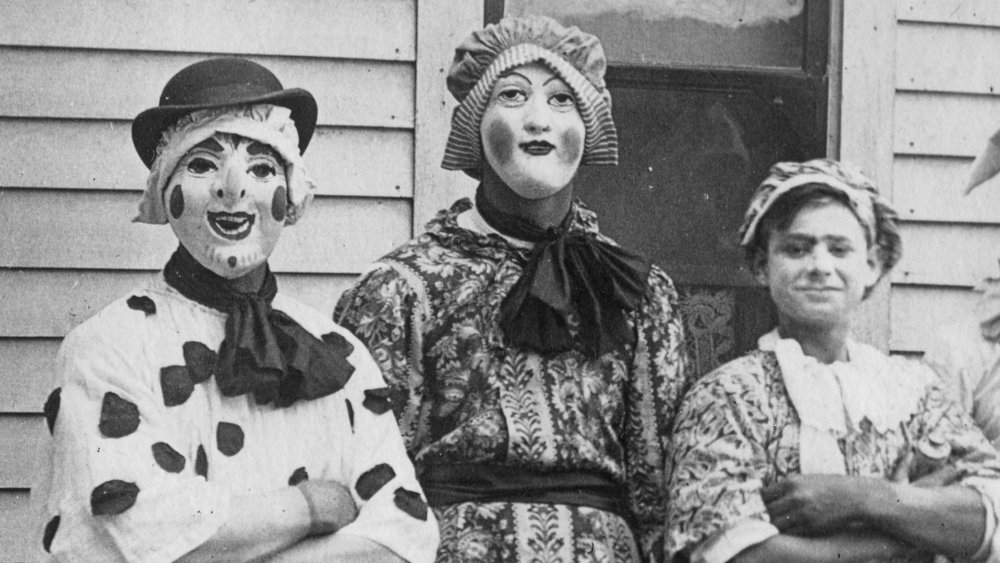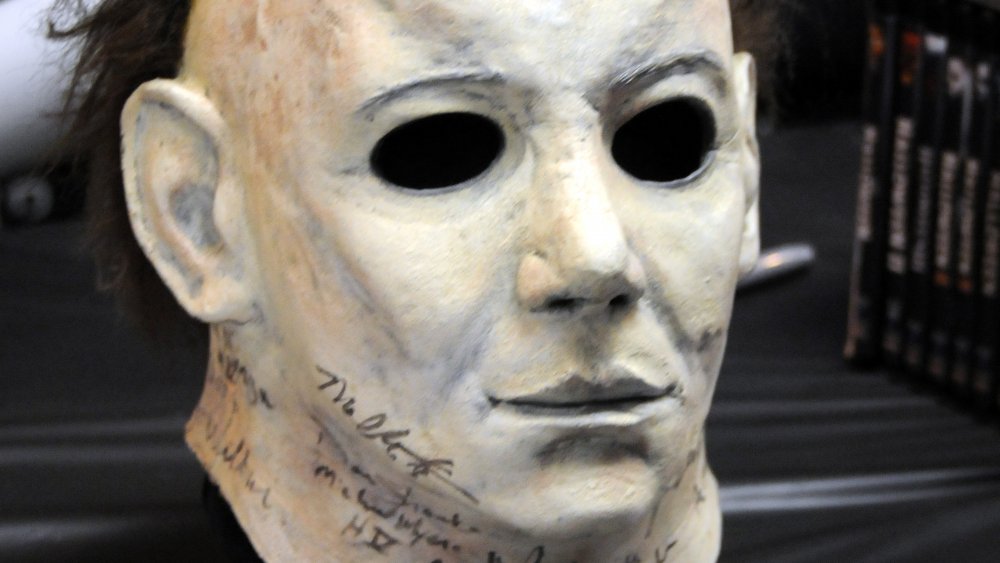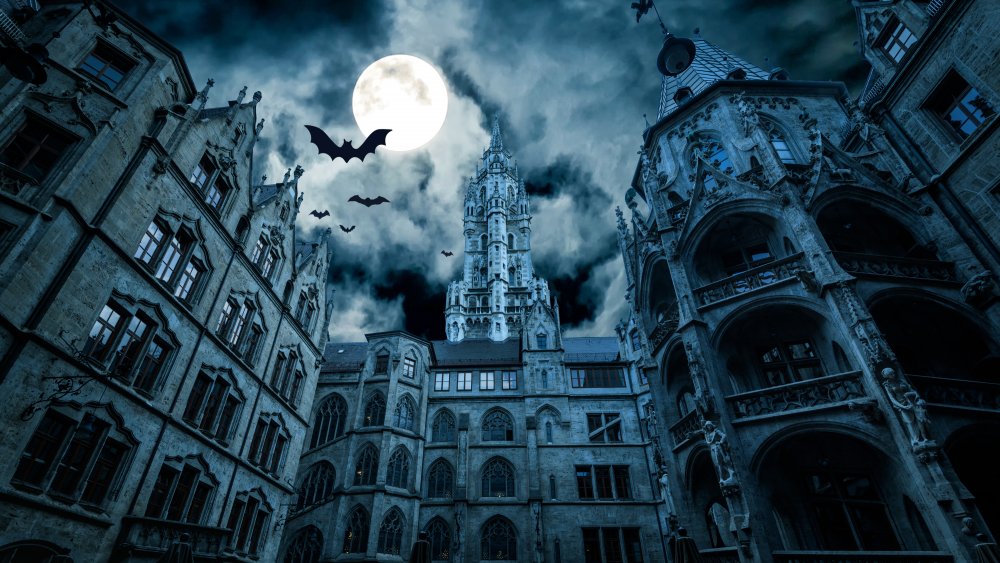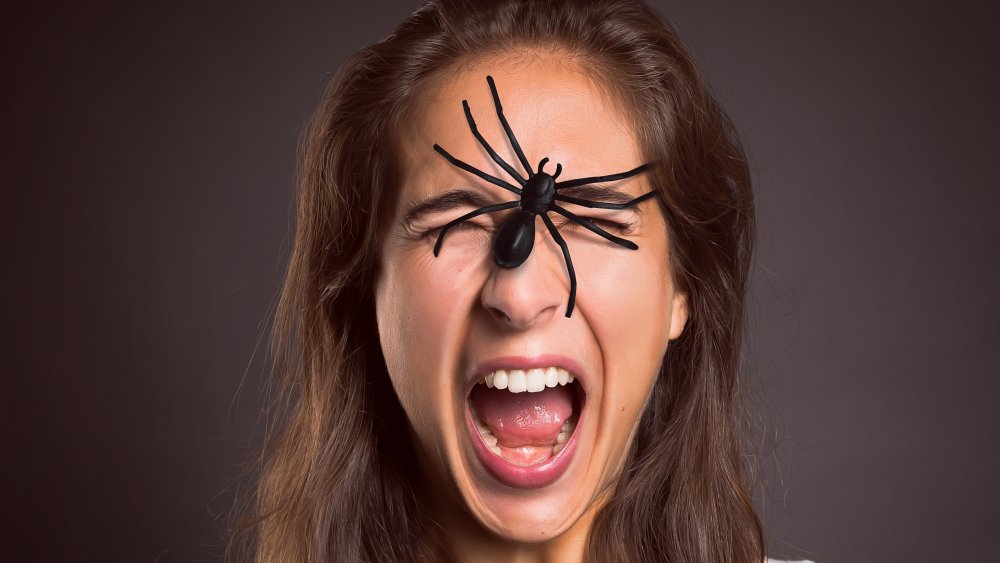Spooky Urban Legends That Take Place On Halloween
Welcome to the dark side. If you're into Halloween, or Samhain as the Celtics of Europe once called it, you know that this ancient celebration goes back about 2,000 years. In the time since, Halloween has transformed from a day to honor the dead to a fall festival of "play parties" first hosted by colonial Americans. Good Housekeeping touches lightly on all of this, as well as the pranks, party games, and costumes of the 1800s that evolved into the popular sport of trick-or-treating beginning in the 1950s. Reader's Digest confirms that following the sugar-rationing years of World War II, candy companies had an epiphany: Ancient Samhain provided the costumes, modern Halloween provided the parties. The ploy worked; Business Insider reports that by 2019, Halloween candy sales were expected to top around $8.8 billion.
Like other major holidays, Halloween has evolved to include modern touches but also remnants of the ancient celebrations of long ago. That includes a cauldron of crazy, sometimes bizarre, and sometimes downright scary stories. Some of these are truly descendants of ancient times, per History, morphing through time and adapted to fit the present. So are they real then? Only you can decide. Read on if you are into "ghoulies and ghosties and long-leggity beasties," as the old Scottish poem goes, to find out more about legendary Halloween tales that have stood the test of time.
The legend of Bloody Mary
Ah, Mary. The one surviving child of Henry VIII and Catherine of Aragon ruled over England between 1553 and 1558. But History confirms that Mary I was already vexed when she took the throne because some pesky Protestants managed to instate her cousin, Lady Jane Gray, as queen before Mary forcibly took the crown. Her first execution order was for the Lord of Northumberland for his role in the attempted coup. Mary didn't stop with him; she also executed 300 Protestants over the course of her reign, earning herself the moniker "Bloody Mary." But how did her story evolve to the modern-day legend that uttering her name three times in front of a mirror will summon her?
USA Today says the Bloody Mary legend may not be linked to the Queen of England at all, but a witch who met her end during the infamous Salem Witch Trials of the late 17th century. Snopes explains that a variation of the story includes summoning the victim, Mary Worth, but Stitcher confirms there was no such name on the witch roster at Salem. Snopes also details lots of other variations of the Bloody Mary story, and the alleged results if the chant actually works. Whoever she is, if Bloody Mary actually appears in the mirror, she might reach out and scratch you, "pull you across the mirror," or possess you until your mom comes home.
Is that a razor blade in your Halloween apple?
Apples have been bobbing around Halloween since the days of Celtic mythology, according to Business Insider. The game was initially a romantic party game wherein folks threw a marked apple in a tub of water and hoped their true love would successfully grab it using only their teeth. Writer W.H. Davenport Adams added a twist in 1902: the apple skin was then peeled into a long strip, which shaped the initial of the said true love upon falling to the ground (per Live About). Apple bobbers, in general, are lucky to grab the apple at all—especially, per Readers Digest, if some maniac has skillfully slid a razor blade inside the fruit.
Four Pounds Flour claims that the old razor-in-an-apple story stems from a 1960s rumor that 20 apples in New Jersey were found to contain razor blades. The story was a hoax, which scholars Joel Best and Gerald T. Horiuchi elaborated on in their paper, "The Razor Blade in the Apple: The Social Construction of Urban Legends." Besides, KTEN says, far more scary are the nasty germs you get from thrusting your face in water already filled with the saliva and bacteria of others. Instead, the News-Review suggests, try fishing for apples using chopsticks or a spoon, hang individual apples from a clothesline for biting, or stage an apple toss.
Stingy Jack the Jack O'Lantern haunts your dreams
Way back around the 1500s, according to Mental Floss, an Irish blacksmith named Stingy Jack invited the devil for a drink. Unwilling to pay for the cocktails, Jack convinced the devil to turn himself into a coin to settle the tab — and then skipped with the money. Later he let the devil turn back into himself on the promise he wouldn't claim Jack's soul when the cheapskate died. When the two crossed paths again, Jack talked the devil into climbing a tree and carved a cross in the trunk so he couldn't get down. For the second time, Jack let the devil free on the promise his soul wouldn't go to Hell. But when Jack died Heaven wouldn't take him. The devil kept his promise to leave Jack's soul alone, instead giving him a burning coal so he could "find his own hell."
Next, according to the 1835 Dublin Penny Journal, Jack spent the next few centuries wandering around in the dark with his coal, which he kept in a turnip, per Business Insider. According to History, folks in Ireland and Scotland started carving frightening faces into turnips and potatoes to scare the "Jack of the Lantern," or Jack O'Lantern, away. The tradition traveled to England, where large beets were favored for carving. And upon arriving in America, colonial pioneers decided to use pumpkins. Sorry Linus, there is no Great Pumpkin. Just the ghost of a stingy barfly.
Beware of the Bunny Man on Halloween
There once was a crazy man in a bunny suit. According to Medium, he was on a bus from an insane asylum that crashed. The man escaped and ate rabbits which he then hung from what became known as the "Bunny Bridge" before turning to gnaw on little children. Although this story originated in Virginia, the 2011 film, The Bunny Man, successfully spread the legend around the country as the nutbag started eating any human he came across. Inside Nova says that standing at the Bunny Bridge at midnight on Halloween and uttering "Bunny Man" three times will bring the maniac's spirit out, but he will slash your throat and hang you off the bridge. Doesn't that sound like fun?
There are several variations to the Bunny Man urban legend. Writer Matt Blitz said some tales date back to 1904. But a Virginia historian, Brian Conley, discredited that and other legends in his paper about the Bunny Man. Conley's research spanned from 1872 to 1973, yielding "over 550 individual mentions of" the Bunny Man but nothing fact-worthy save for a couple of 1970 sightings wherein a guy in a bunny suit whacked at a car and a private home with an ax. Nobody was hurt. So does the Bunny Man really exist? Find the Bunny Bridge and utter his name three times at midnight on Halloween to find out.
The urban legend of Halloween campus killers
What's worse than being killed by a psycho? Being killed by a psycho dressed as Little Bo Peep, that's what. Indeed, a psychic once predicted on a talk show (just which one remains kind of vague) that a Halloween "mass murder" will happen on a college campus, per this Halloween website. Sometimes, only young women will be the victims. And sometimes, the ax or knife-wielding killer will either be dressed as Bo Peep or wearing a scream mask, USA Today reports. It will happen at one of the bigger colleges, or one that starts with a certain letter, or one whose colors are orange or black, or one that is conveniently located near a lake, pond, river, or railroad tracks.
Thought Catalog says this legend has been floating around since the late 1960s. But has it happened? Nope, according to Snopes, which elaborates on various versions of the tale but submits that a campus is a perfect place for spreading rumors of such an event. Of course, the 1981 movie Final Exam, wherein students are picked off one by one, didn't help. Sadly, however, Time reported in 2019 that five people really were killed at a college Halloween party in California, which took place at an Airbnb. And with mass shootings on the rise, it's best to just be careful out there.
Halloween decoration or dead body?
"80's kids, do you remember these 'legit' Halloween urban legends?" USA Today calls out cheerfully, citing a 2014 story in which an old man died in a haunted house attraction and wasn't discovered for weeks. That story wasn't true but the one about outlaw Elmer McCurdy, who died in 1911 and resurfaced as a funhouse dummy in 1976, is. If that isn't creepy enough, there are other true stories out there. In 1990, a New Jersey teen accidentally hanged himself on a Halloween hayride, according to Thought Catalog. He wasn't discovered until he "failed to deliver his speech" when the driver stopped.
There are more: Freaked talks of another boy who was observed struggling in a noose by passersby. They thought he was part of the Halloween festivities. And another kid accidentally hanged himself while decorating his aunt's home. Then there are the suicides: the woman who hanged herself in 2005 and wasn't reported for hours because she was thought to be a Halloween dummy, and a man who shot himself in the head and was presumed to be a Halloween porch prop for three days. Thankfully, the best body prop really was a fake, fabricated by a Texas man in 2012 who created a very lifelike body using newspaper and masking tape, per Snopes. It was believed to be real until its maker revealed the truth.
Light as a feather, stiff as a board is a common Halloween legend
This one has been a special favorite of girly sleepovers for generations. The "game" is quite simple, according to Cosmopolitan: One person lies on the floor, arms crossed. The others get on either side, sliding just two fingers underneath "the body." Then someone tells a story about an imaginary dead person, or sometimes there is chanting involved. At last, the group says in unison, "Light as a feather, stiff as a board" while trying to lift said body off the floor. The rules have changed little, from the time in 1665 when Samuel Pepys actually witnessed four "very young" girls successfully levitate a small boy to more recently, when Love What Matters recounted trying it as a teenager with her friends.
Does this popular party game really work, you ask? Science says it actually can! Here's why: The group must concentrate "as one mind" which helps everyone lift the body in unison. By doing so, each person actually only lifts roughly "20 to 40" pounds, akin to carrying a loaded grocery bag, which you can easily do with two fingers. If you're still unsure, check out The Craft Legacy, which Vanity Fair says is a sequel to 1996's The Craft. The original movie includes its own version of the game, with interesting results.
Do Ouija boards really work on Halloween?
Back in the 1890s, spiritualism was a highly popular pastime. Mediums, psychics and seers dispensed advice like candy. In 1891, according to Smithsonian Magazine, Kennard Novelty Company capitalized on spiritualism by offering "Ouija, The Wonderful Talking Board" which could actually be used to summon the dead. And today, certain psychologists actually believe it can work. Although Parker Brothers eventually got the rights and made it into a game, Holidappy says, thousands of stories are out there about the mysterious board. Even 1973's film The Exorcist is said to be based on the true tale of a boy who "played" with Ouija.
Indeed, demonic spirits are sometimes associated with Ouija, according to The Guide Liverpool, especially if you fool around and ask the wrong questions. Stories of possession, feelings of paralysis, night terrors, and a plethora of other bad things are rife in Ouija lore. Keep in mind too that Baltimore Magazine claims Kennard Novelty Company incorporated the day before Halloween, and that the owner of the company was an undertaker. Also, the woman who named the board after a locket around her neck, Helen Peters, was able to convince the United States Patent Office authorities that the board "delivered as promised." Even the University of British Columbia claims it works using the subconscious, so be careful what you wish for.
The 1962 Halloween Massacre is urban legend
Here is the horrifying story, according to Action News 3: On Halloween night in 1962, 85 people were at a party, including a man wearing a black mask. Shortly after a picture was taken of him with other partygoers, the villain locked the doors and tried to stab everyone with a kitchen knife. Seven people died. The killer was never caught, although the FBI uncovered the black mask in 1969. But news sources fail to reveal that any such massacre took place. Yet the haunting image of the mysterious man continues to appear across the internet, per Bustle, and the people in the photograph remain unidentified.
Like many other websites, The Line-Up dispels any notion the story is true. Enter Snopes, which also dismisses the story as folklore and reminds everyone that there are so many holes in the tale it can't hold soup, let alone an inkling of truth. In the olden days, folks were quite adept at making their own homemade and "unusual" costumes (see above), long before supermarket chains thought of manufacturing ready-made costumes. But the story remains so popular that it could make a fun costume today. Try wearing a creepy black mask to a party, stand around, and say nothing while holding a knife (read: replica), and see what happens.
Was Michael Myers a real person or a Halloween myth?
You're going to like this one. According to Mystic Investigations, the iconic Halloween movies are based on a real person. His name was Stanley Stiers, and he was the victim of abusive alcoholic parents when he went on a killing spree in 1923. Not so, Dread Central reports, which says director John Carpenter based Myers' character on a different serial killer, Ed Kemper, who killed his first victims at age 15. But even that website has no proof that Carpenter used Kemper as the basis for Myers. So who inspired the Michael Myers character?
Screen Rant claims that Carpenter once visited a mental institution as part of his college class and indeed encountered a particularly intriguing resident. "There was this kid, he must have been 12 or 13," Carpenter explained in a video about the Halloween films, per MSN, "and he literally had this look" that Carpenter transferred to Myers. That's kind of creepy, but what about Michael Myers' spooky mask? Well, according to Star Trek, the mask Halloween lovers know so well is actually a Captain Kirk mask. Actor William Shatner, who played Kirk, once got even — by wearing the Michael Myers mask for Halloween.
The urban legend of the 13th floor
There is a haunted house out there, somewhere, with thirteen floors, according to Thought Catalog. And it is so scary and dangerous that the owner makes you sign a waiver before you can enter. And if you can make it through the whole house, all the way to the top, you win some money. But nobody has ever made it to the top. In fact, nobody has ever survived the ordeal. Nobody! Okay, but hold on, just wait a second. There is no way on earth such a place exists, although Snopes verifies that there are allegedly several haunted places that people can't hang with all the way to the end — including haunted houses in several eastern states, as well as Texas and Oregon.
Stories vary as to what happens to those who can't complete their ghostly tour. Some win cash for each floor they visit, some get their admission fee back. Only those visiting Richard Garriott's 4,500 square foot haunted mansion in Texas got in free each Halloween between 1988 and 1994. But the legend of the 13th floor is especially intriguing since Travel and Leisure explains that lots of buildings, especially hotels, don't have a 13th floor due to triskaidekaphobia, the fear of the number 13. Thanks to the urban legend, however, there are now several Thirteenth Floor Haunted Houses across America. Enter if you dare.
The Halloween legend of the spider wig
So you've bought a big wig for Halloween (picture Jan Brady's new 'do in that one Brady Bunch episode), and you wear it to a party, and suddenly a bunch of creepy, crawly spiders suddenly erupt all over your head (now start singing the "Spider-Man Theme Song.") Unfortunately, arachnophobia isn't that funny, but a little comic relief is necessary when considering the odds of finding a cluster of creepy crawlies in your hairpiece. Urban legend tellers just love this one, according to USA Today. The most common story has the victim fetching Grandma's nasty old wig from the attic, having it get a bit itchy as the evening wears on, and finally realizing with horror that spiders are emerging from their hair, cascading over their face and down their neck as people around them flee in terror.
The Line-Up confirms that this particular urban legend dates to the 1950s when beehive hairdos were all the rage. Snopes takes the story further, stating that the alleged bouffant victim dies from multiple spider bites, and also that the claim is false. Notably, however, the website offers no positive evidence that this has never happened, although two stories on the website say it allegedly did. Snopes does, however, cite one true story: In 2000, a bride in Yemen died after her rival stuck a scorpion in her wedding wig, with fatal results. And it wasn't even Halloween.
